Standing out in a sea of content is akin to finding a needle in a haystack. But what if I told you that there’s a secret weapon in your content arsenal, one that not only elevates your SEO game but also establishes your authority in your niche? Enter pillar content, the cornerstone of any successful SEO strategy.
In this ultimate guide to pillar content, I will explain what makes compelling, impactful pillar content. I’ll also take you through the steps required to create an SEO pillar content strategy. Plus, I’ll share the best pillar content examples to inspire your business to achieve its content marketing goals.
Get ready to captivate your audience, boost your search rankings, and set a new standard in content excellence!
What Is Pillar Content?
Pillar content, often referred to as cornerstone content, is a comprehensive, in-depth piece of content that serves as the foundation for a specific topic or subject area on your website.
It’s called “pillar” content because it supports and gives structure to other related content, much like how a pillar supports a building:

In essence, pillar content is content that provides a complete answer to any question a user may be searching for on a given topic. It’s specifically designed to provide value for the reader, and also to rank highly in the search engines.
Pillar content is typically long-form and covers a broad topic extensively. It often comes in the form of guides, e-books, or extensive blog posts, and is intended to provide significant value to the reader.
Another name for pillar content is 10X content:

This is content that Rand Fishkin from Moz describes as “content that’s 10x better than the highest ranking result for a given keyword.”
The basic characteristics of pillar content include:
- Comprehensive: Pillar content covers a broad topic extensively and solves a problem or answers a question with comprehensive, accurate information. It should provide readers with a thorough understanding of the subject.
- Long-Form: Pillar content tends to be longer and more in-depth than regular blog posts or articles. This allows the topic to be covered in detail.
- Evergreen: Pillar content should ideally be evergreen, meaning the information it contains remains relevant and valuable over time.
- Authoritative: Pillar content is designed to showcase expertise on a topic, and as such, it should be authoritative and reliable.
- Well-Structured: Due to its length, your pillar content structure must make it easy for readers to navigate and understand. This often includes the use of headings, subheadings, lists, and visual elements.
- Keyword-Focused: Pillar content is usually centered around a specific keyword or phrase relevant to your field or industry.
- Linked to Cluster Content: Pillar content serves as a hub for related, shorter pieces of content (cluster content). These pieces should be interlinked, creating a content cluster that aids SEO.
- Highly Shareable: It’s different in scope or detail from other content on the subject. Given its comprehensive and valuable nature, pillar content tends to be highly shareable on social media and other platforms, helping to boost visibility and reach.
- Regularly Updated: To maintain its relevance and accuracy, pillar content should be updated regularly, especially as new information or trends emerge related to the topic.
- Includes a Call-to-Action: Often, pillar content includes a call-to-action (CTA) to encourage readers to take a specific step, such as subscribing to a newsletter or downloading an additional resource.
As it relates to business blogging, pillar content can also be defined as a series of posts that represent your site’s best work. These are the posts you’ll refer new visitors to, as well as the ones that will continue to be useful to readers long after they’re initially posted.
Blog posts and articles are great examples of ideal pillar content, but infographics, videos or other informative pages are also useful content types that can be included on a pillar page to support the topic.
The Role of Pillar Content in SEO
It’s no secret that publishing blog posts or articles on your business website is a great way to:
- build the content needed to enhance your site’s SEO strategy
- and connect with your audience on a more personal level
And one of the main benefits of pillar content is that it can help with your search engine optimization (SEO) efforts. How?
By interlinking related, shorter blog posts (also known as cluster content) to your pillar content, you create a content cluster. This signals to search engines like Google that your pillar content is the authority on the subject. This strategy can help improve the visibility of your content on search engine results pages (SERPs).
More than 92% of content marketers use blog posts as part of their content marketing strategy:

Where many marketers go wrong is prioritizing quantity over quality, and pumping out short content pieces every day because they think it’s going to bring in more traffic.
The Content Marketing Institute reports that, when it comes to their blog posts and articles being the most effective content types for demand generation:
- 29% of B2B marketers think their efforts are “extremely” or “very” successful
- 55% of B2B marketers think their efforts are “moderately” successful
- 17% of B2B marketers think their efforts are “minimally” or “not at all” successful
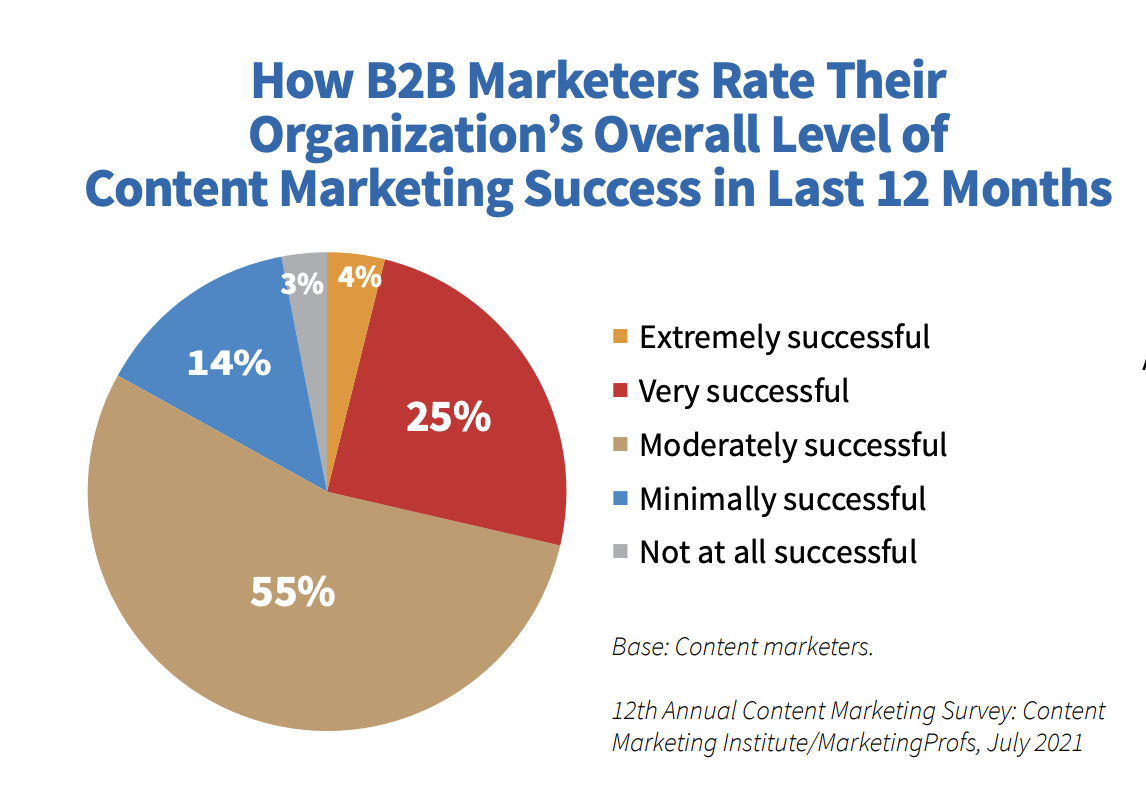
The truth is, creating a lot of high-quality content isn’t easy. There’s a big difference between a business blog that’s chock-full of lackluster, uninformative posts and one that’s bursting at the seams with the type of high-value content that naturally draws in readers.
As you’ll obviously have better business results with the second scenario, you need to take the time creating content pillars that solidifies your blog’s reputation as a go-to source for good content within your industry.
Here are the top ways how an effective pillar content strategy assists in SEO:
- Comprehensive coverage: Pillar content aims to cover a broad topic or theme comprehensively. By creating in-depth, high-quality pillar content, you demonstrate expertise and authority in your niche. Search engines value authoritative content and are more likely to rank it higher in search results.
- Keyword targeting: Pillar content allows you to target relevant keywords and search terms related to your industry or niche. By conducting keyword research and strategically incorporating target keywords into your pillar content, you can improve its visibility in search engine results pages (SERPs).
- Internal linking structure: Pillar content serves as a central hub that connects to related subtopics or cluster content within your website. By organizing your content using a topic cluster model and establishing a strong internal linking structure, you create a logical and interconnected web of content that search engines can crawl and index more effectively.
- Enhanced user experience: Pillar content provides valuable information and answers to users’ queries in a comprehensive and organized manner. When users find your pillar content helpful, engaging, and easy to navigate, they are more likely to spend more time on your website, reduce bounce rates, and increase overall user engagement metrics. Positive user signals like these can improve your website’s SEO performance.
- Backlink generation: Well-crafted pillar content tends to attract backlinks from other websites, blogs, or industry publications. Backlinks are external links pointing to your content, indicating to search engines that your content is valuable and authoritative. High-quality backlinks can significantly boost your website’s domain authority and improve its overall SEO performance.
- Long-term value: Pillar content is designed to be evergreen, meaning it remains relevant and valuable over an extended period. Unlike time-sensitive or trending content, pillar content provides lasting value, generating consistent organic traffic and SEO benefits over time.
- SERP features and snippets: Well-structured pillar content that effectively answers common search queries can appear in featured snippets, knowledge panels, or other SERP features. These prominent positions in search results can significantly increase visibility and drive more organic traffic to your website.
Difference Between Content Pillars and Cluster Content
Most content marketers are confused between pillar post and topic clusters. Now that you have read the pillar page definition, let’s take a look at the differences between pillar content and topic clusters.
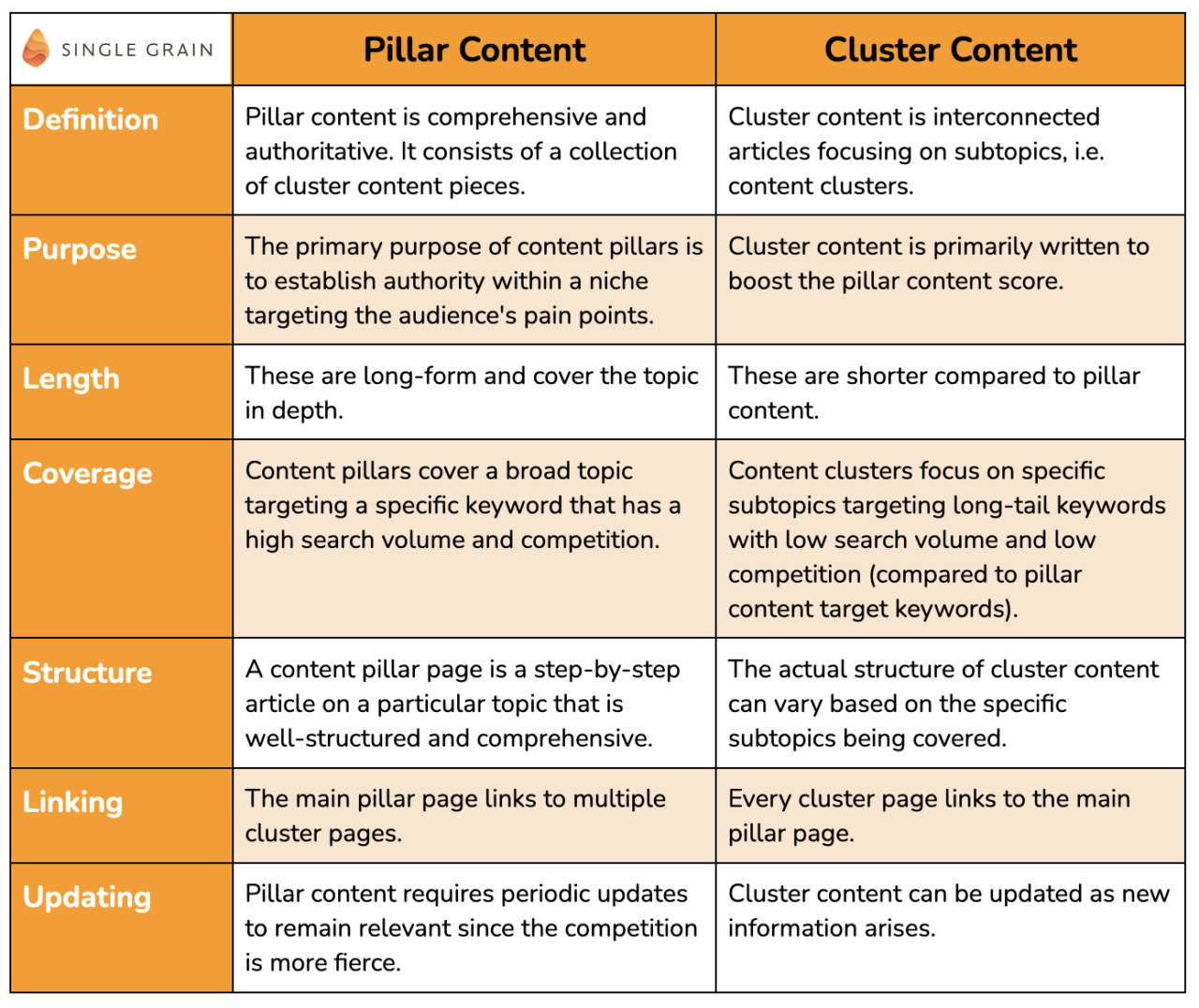
Benefits of Pillar Content
The main benefit of pillar pages to users is obvious: It provides all the information people are searching for on a topic in one place.
But there are even more benefits for website owners, including:
- Longer time spent on your site’s pages. Pillar content usually offers comprehensive information on a given topic. As a result, users are likely to spend more time reading through the various aspects you’ve covered, absorbing the rich information provided. This increased dwell time can positively impact your site’s SEO, as search engines may perceive your site as valuable and engaging.
- A decrease in bounce rate. Pillar content that is well-structured and addresses user queries effectively can reduce bounce rate significantly. By delivering on the promise of comprehensive coverage on a topic, users are less likely to return to search results for other sources, thus indicating to search engines that your content is satisfying users’ needs.
- Backlinks and a ton of social media shares. High-quality pillar content is more likely to be linked by other websites and shared on social media. These backlinks and shares not only increase your content’s reach but also serve as indicators of content quality and relevance, which can enhance your search engine rankings.
- Gets traffic throughout the lifetime of your blog or website. Pillar content is usually evergreen, which means it remains relevant and valuable over a long period of time. This long-term relevance helps attract consistent traffic, contributing to your site’s sustained visibility and user engagement.
- A high Google ranking. Pillar content, due to its in-depth coverage, high word count, and potential to earn backlinks and shares, can significantly improve your SEO efforts. Search engines like Google appreciate comprehensive, high-quality content and may reward your pillar content with higher rankings in search results.
- Improved site structure. Pillar content often serves as a cornerstone around which related, shorter pieces of content (or cluster content) revolve. This setup can enhance your site’s structure, making it easier for both users and search engine bots to navigate your content, thus improving user experience and SEO simultaneously.
5 Steps to Creating Effective Pillar Content
Because pillar content goes above and beyond standard blog posts, it requires some extra effort to create content pillars.
If you’re interested in making use of this potent business tool on your own website, take a look at the following 5-step process for creating your own series of pillar articles.
Step 1: Understand Your Audience
Building pillar content for your personal or business blog might seem like an individual pursuit – after all, isn’t this an opportunity to pour out your innermost thoughts and most meaningful pieces of advice to your readers?
Well, yes and no. Writing pillar content that’s uniquely yours is important, but it’s even more important that the topics you choose to address resonate with your audience members.
If you’re counting on these critical articles to represent your business in the best way possible, it’s important that they be of the greatest possible use to your readers.
To do this, you must first define your audience and conduct audience research.
Define Your Audience
To define your audience, start by creating detailed descriptions of the specific people you want to connect with. These descriptions, known as buyer personas, give you a complete picture of the individuals you’re trying to reach.
Begin by answering the following questions:
- Is my audience primarily male or female?
- What is the average age of my audience members?
- Which ethnic groups do my audience members belong to?
- Where are my audience members located geographically?
- What do I know about my audience’s average education level?
- What is the average socioeconomic status of my audience members?
Answering these questions will give you some idea about how to best address your audience within your pillar content posts, but you’ll need to conduct an even more thorough analysis on the following subject before you start writing.
Here is an example buyer persona for a company selling guitars. Look how detailed the description is as though it is of a real person.

Conduct Audience Research
To create a detailed buyer persona, you need to perform audience research. This means learning about their characteristics, what they like, and how they act. By doing research, you collect the data necessary to create an accurate and complete buyer persona.
Choose the most suitable research methods to collect data about your audience. Common methods include:
- surveys
- interviews
- focus groups
- observations from your sales team
- analyzing existing data or market research reports
Design questions that will help you gather the desired information from your target audience. Make sure the questions are clear, unbiased and relevant to your research goals.
Once you have collected the data, analyze it to identify patterns, trends, and key insights about your audience. Look for commonalities and differences among respondents to gain a comprehensive understanding.
Tools to Use for Audience Research
There are several tools you can use to perform audience research. It’s also important to combine multiple tools to gain a comprehensive understanding of your audience.
Here are the top tools to use for audience research:
- Social media listening tools: Use social media analytics tools to monitor and analyze conversations happening on social media platforms. This allows you to understand audience sentiments, interests, and trends.
- Website analytics: Get help with tools like Google Analytics to gain valuable data on your website visitors, including demographic information, user behavior, and interests. This can give you insights into your audience’s preferences and interactions with your website.
- Customer feedback and reviews: Analyze customer feedback and reviews through platforms like Yelp, Trustpilot, or dedicated feedback collection tools to gain valuable insights into your audience’s experiences, preferences, and pain points.
- Competitor analysis: Analyze your competitors’ marketing strategies, target audience, and customer interactions to gain insights into their audience. Tools like Semrush or SimilarWeb can help you gather competitor data.
- Data analysis platforms: Use data analysis tools such as Excel, Tableau, or SPSS, to evaluate large datasets to identify patterns, correlations, and trends within your target audience.
Dive Deeper: A Comprehensive Guide to Create Compelling Traffic-Driving Pillar Posts.
Step 2: Identify Your Readers’ Most Pressing Needs
Now that you know who your audience members are, it’s time to uncover the issues that are on their minds, as understanding their pressing needs will help you to develop relevant topics for each of your pillar posts.
There are a number of ways to use your audience to determine the best content ideas.
Analyze Data from Social Media, Surveys and Customer Service
Review comments, feedback or inquiries from your readers on your website, social media platforms or customer support channels. Look for common themes or recurring questions that indicate their pressing needs.
If you aren’t a member of your own target audience, you can still get a glimpse into their mindsets and interests by monitoring ongoing conversations on social media platforms, especially LinkedIn and Twitter (try using Twitter’s Advanced Search):
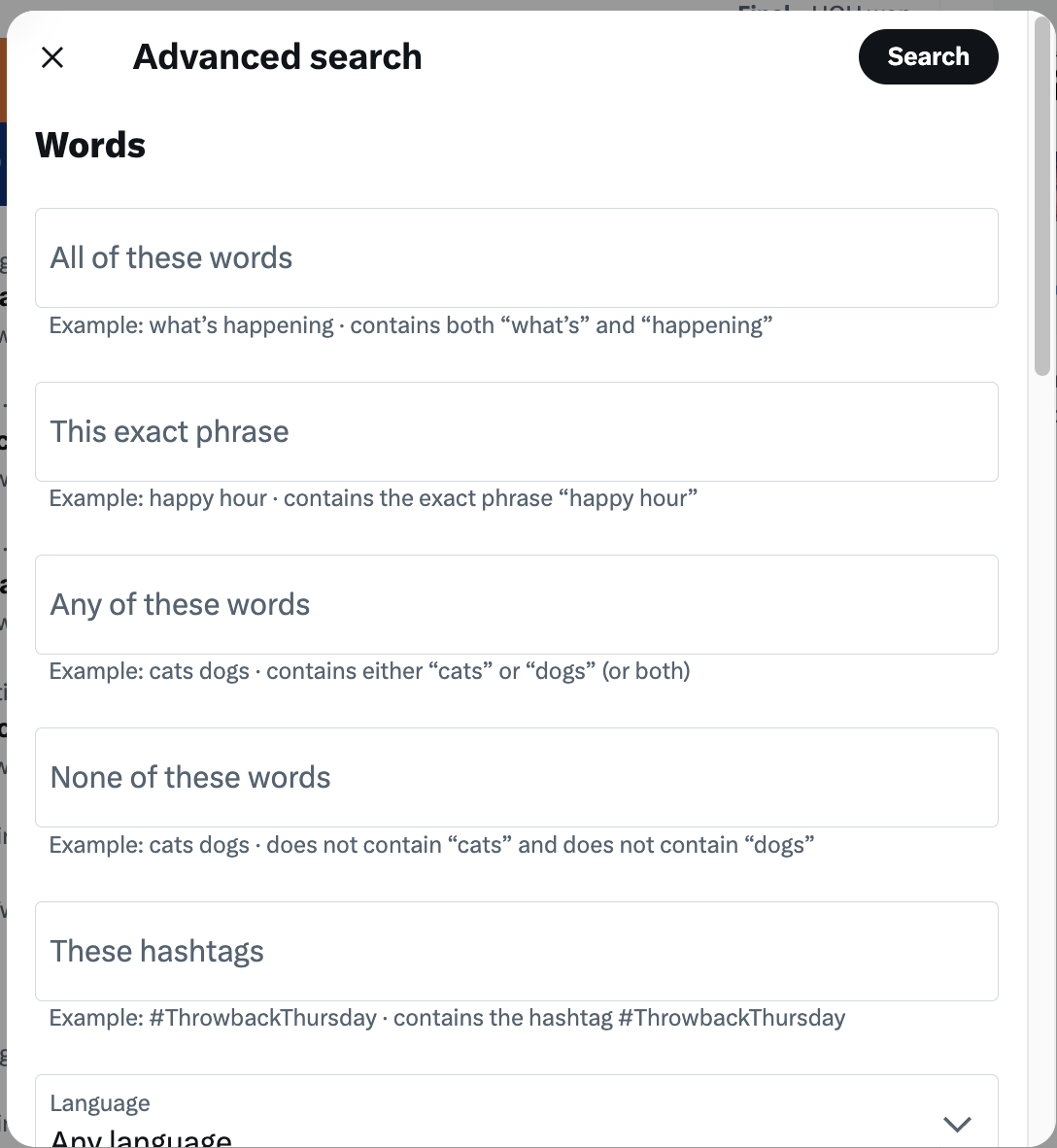
Read through your followers’ posts and take a look at which topics are mentioned, which articles are shared most frequently and which messages get shared most often. This information should give you a starting point for producing your pillar articles.
Put Yourself in the Shoes of Your Customers
Are you a member of your target audience? If so, try to remember how you felt and what you thought about when you were a beginner in your industry. Think about the questions you had and the things you were most desperate to learn, and then use these ideas as the basis for your pillar articles.
Examine Success Gaps
In business, there’s a gap between the company’s desired result and the user’s desired result known as the success gap.
For example, if you have a productivity app, your desired outcome is to get people to download it and use it. The customer’s desired outcome is to be more productive. Your app alone won’t make them productive – they may have bad work habits, time management issues or be prone to procrastination.
But addressing those gaps with content will help your existing customers be successful and also pull in new people who struggle with similar issues – people who are likely to want to use your app.
Analyze Competitor’s Content
If you’re still struggling to come up with topic ideas, take a look at the content pieces from your competitors that are popular to discover their strengths and weaknesses:

You can perform a competitive analysis using tools like Semrush and Ahrefs. As long as your audiences are similar, the topics that are playing well on other sites in your industry will likely translate well to your own audience (just be sure not to plagiarize!).
Note: Because you’ll be investing significant resources into developing your pillar content, give the specific topics you’ll cover some serious consideration before moving on to the next step.
Identify the Best Content Format
Identify the content format that would be ideal for your target audience. There are several different types of pillar content with the potential to be high ranking and convey your information, including:
- how-to guides
- list-based posts
- statistic-based posts
- quick reference guides
- roundup posts
When choosing the best content format for your pillar content, consider the complexity of the topic, the preferences of your target audience, and the most effective way to present the information.
You can also experiment with a combination of formats, such as embedding videos or infographics within long-form articles, to create a more comprehensive and engaging pillar content experience.
Step 3: Create Damn Good Content
At this stage of the process, you should have a solid content idea for your pillar content page that’ll meet your users’ needs, not just now but in the future. Now it’s time to start creating your pillar articles!
As you approach the content creation process, remember that your pillar content articles should be so helpful and engaging that audience members feel compelled to bookmark your page and share them with their friends, family members and colleagues.
Writing and Designing Pillar Content
- Headline: It’s been said a zillion times before, but remember that 80% of people will read a headline while only 20% will click to read the rest of the blog post. This is the very first thing people will see, so make it catching, intriguing and informative (no click bait!).
- Hook: Even after people click on your article, only 16% of your readers will read the entire thing. Your lede (or hook) — that attention-getter at the start of the blog post — must make the reader want to keep reading. Here are some good hooks:
- Interesting facts that they haven’t heard before
- An anecdote, a cliffhanger or the end of a story
- A direct question that the reader resonates with
- A current events reference
- Story: People love stories because it creates a human connection based on empathy. Just because you are writing an article and not a novel doesn’t mean you can’t use storytelling techniques in your post.
- In-depth content: Dive into each section of your pillar content, providing comprehensive information, examples, statistics, and practical tips. Use clear language, break down complex concepts, and incorporate visuals or multimedia elements to enhance understanding.
- Research: Have you ever read an article that said something like “Humans only use 10% of their brain”? This ‘fact’ has been widely circulated, suggesting that we have untapped psychic or intellectual potential. However, upon deeper examination, this claim is demonstrably false. According to modern neuroscience, we use virtually every part of the brain and that most of the brain is active almost all the time. There’s no better way to lose the trust of your readers than to not back up what you’re saying with reputable, up-to-date research.
- Revise: Take the time to revise and edit several drafts of your pillar content posts before publishing them – asking yourself each time whether or not the content you’re sharing goes above and beyond what your readers will expect. If you’re just churning out the same content as everyone else in your industry, it’s not worth the effort.
Formatting for Readability and Engagement
- Structure: Unless you’re devising a new torture method, don’t force your audience to read a 2,000-word article that has no headers, no images, no bullet points and no paragraphs.
- White space: Incorporate space, or empty space between paragraphs, sections, and images to improve visual appeal and readability. It gives readers a visual break and helps to guide their eyes smoothly through the content.
- Images: Incorporate relevant images, infographics, or charts to enhance visual appeal and illustrate key points.
- Paragraphs: Long paragraphs and sentences can be intimidating and difficult to read. Aim for shorter paragraphs to enhance readability. Similarly, keep your sentences concise and avoid using overly complex language.
- Hyperlinks: Include hyperlinks to credible and relevant external sources or internal pages within your content. This allows readers to access additional information or dive deeper into specific topics of interest.
- Responsive: With the increasing use of mobile devices, ensure that your content is mobile-friendly. Use responsive design techniques to adapt your content to different screen sizes, making it easily readable and accessible on smartphones and tablets.
- Action/Takeaway: Now that you’ve wowed the reader and performed a miracle by getting them to read your entire blog post, you need to tell them what you want them to do. End your piece with a clear call to action;
Integrating Pillar Content Best Practices
- On-page optimization: Optimize your content by placing keywords in important web page elements such as the title tag, headings, meta description, URL, and within the content itself. Ensure that your content is well-structured with appropriate HTML tags (H1, H2, etc.) to indicate the hierarchy and importance of the information.
- URL structure: Use search-engine-friendly URLs that include relevant keywords and accurately describe the content of the page. Short, descriptive, and readable URLs are preferred by search engines and users alike.
- Internal and external linking: Incorporate internal links to other relevant pages on your website to guide users and search engines through your content. External links to reputable and authoritative sources can provide additional value to your readers and signal to search engines that your content is well-researched.
- Page load speed: Optimize your website’s load speed by compressing images, minifying CSS and JavaScript files, and utilizing caching techniques. Fast-loading pages improve user experience and can positively impact search engine rankings.
Dive Deeper:
* How to Write Lead Nurturing Content: 7 Proven Tactics
* 17 Effective SEO Techniques to Drive Organic Traffic in 2023
* How to Write a Strong SEO Title Tag (with Formulas & Templates!)
Step 5: Update Pillar Content as Needed
Finally, keep your eye out for any industry changes that require you to update your pillar content.
Proper upkeep is essential for every type of pillar post, as these are the foundations of your entire blog and should always stick out from the rest of your content. Don’t be afraid to be draconian with your editing and check regularly through all your pillar posts to ensure their relevance.
Monitor Performance Metrics
- Organic traffic: Keep track of the organic traffic your content receives over time. Analyze which pages are attracting the most organic visitors and identify any significant changes in traffic patterns. This metric helps you gauge the overall performance and visibility of your content in search engine results.
- Keyword rankings: Monitor the rankings of your target keywords for each piece of content. Identify keywords that are performing well and those that need improvement. By tracking keyword rankings, you can identify opportunities to optimize your content further or address any decline in rankings.
- Bounce rate: Bounce rate measures the percentage of visitors who leave your website after viewing a single page. A high bounce rate may indicate that your content is not meeting users’ expectations or needs. Analyze the bounce rates of your pages and consider making adjustments to improve engagement and encourage visitors to explore further.
- Dwell time: Dwell time refers to the amount of time users spend on your website or a specific page before returning to search engine results. A longer dwell time indicates that visitors find your content valuable and engaging. Monitor the average dwell time of your content and aim to create compelling, informative, and user-friendly content that encourages users to stay longer.
- Click-through rate (CTR): CTR measures the percentage of users who click on your content when it appears in search engine results. Analyze the CTR of your pages to determine their attractiveness and relevance to users. If your CTR is low, consider optimizing your meta titles and descriptions to make them more compelling and aligned with user intent.
- Conversion rate: If your content has specific conversion goals, such as capturing leads or driving sales, track the conversion rate. This metric indicates how effective your content is in driving desired actions. If your conversion rate is low, consider revisiting your content to ensure it provides clear and persuasive calls-to-action and aligns with your audience’s needs and expectations.
- Backlinks and social shares: Monitor the number and quality of backlinks your content receives from other websites, as well as the social shares it generates. Backlinks and social shares are signals of authority and popularity, which can positively impact your content’s visibility and SEO. Identify opportunities to acquire more backlinks or encourage social sharing of your content.
Update and Refresh Content
If shifts within your industry make your articles out of date or irrelevant, you’ll want to update your content so that it continues to provide excellent value to your audience. This is especially true if you plan to promote your pillar articles frequently, as referring visitors to out-of-date or incorrect information can have a negative impact on your reputation over time.
Updating blog posts on a regular basis also aids in boosting Google rankings.
Don’t forget to update the actual date on the pillar content, as Google requires that step to recognize that the piece of content has actually been updated.
Add a simple note at the top of the piece to indicate that it’s been updated:
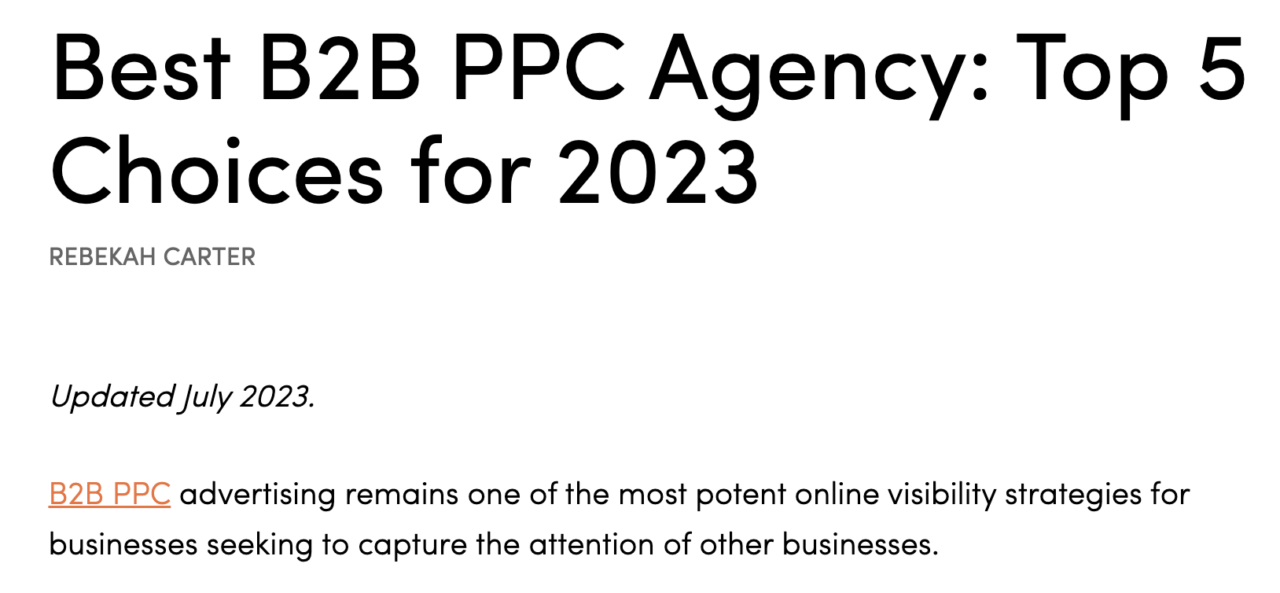
Whenever you update a piece of content, promote it throughout all your marketing channels, stressing that it’s been updated with more info or up-to-date info, etc..
Those who engaged with it the first time will likely go back to see what’s new, and it will tell your audience that you are an authority in your industry, who stays on top of trends and news.
Identify Content Gaps
Perform a thorough audit of your existing content to identify any topics or subtopics that are missing or underrepresented – i.e. content gaps. Look for areas where you have limited or no content coverage. Analyze whether the existing content adequately addresses the needs and questions of your audience.
Look for keywords that have significant search volume but are not well covered by your existing content. These gaps can indicate areas where you can create new content. Ahrefs has a Content Gap tool that makes this easy:
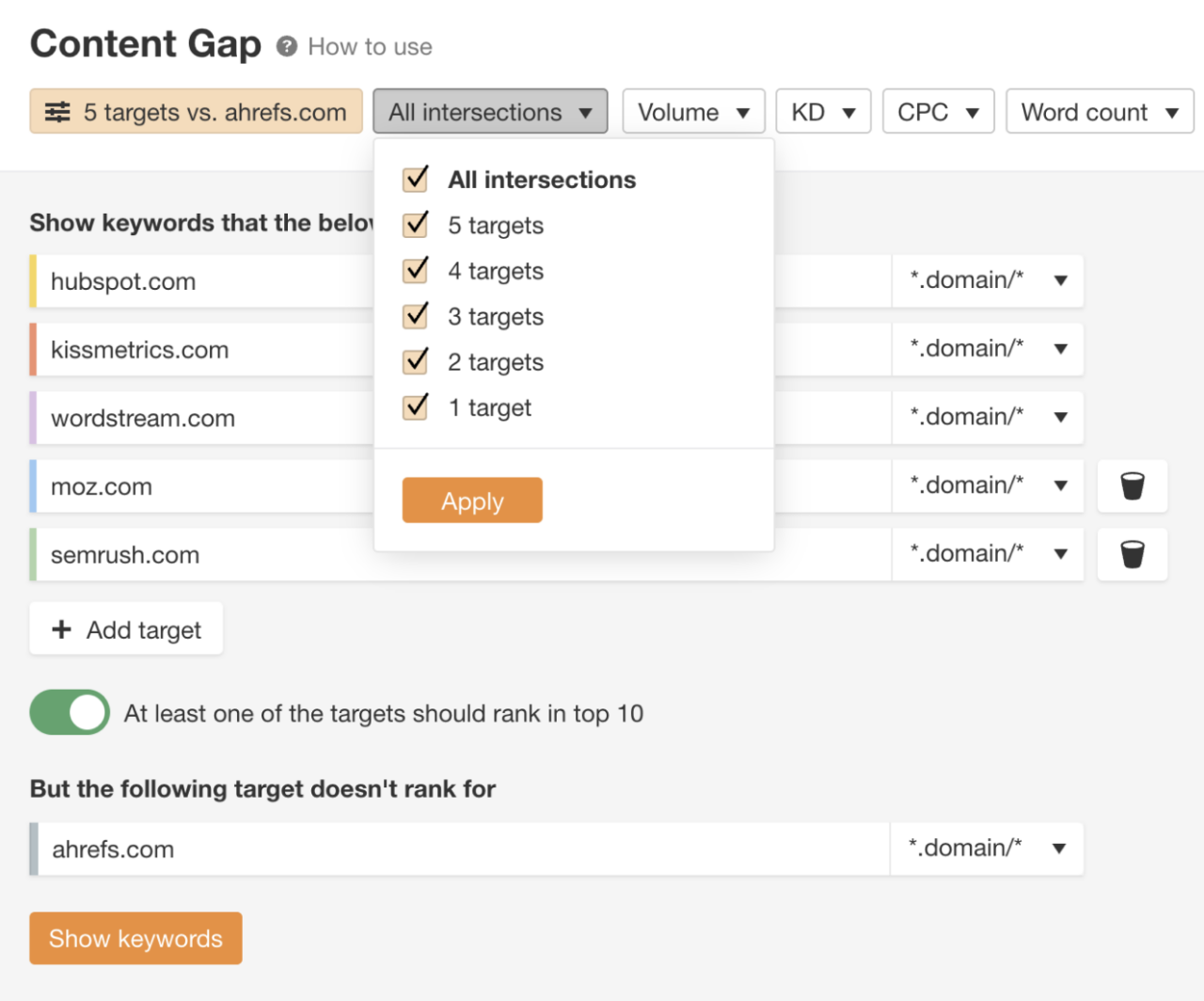
Pay attention to the questions, comments, or feedback received from your audience through social media, email, or customer support channels. Look for recurring themes or inquiries that indicate areas where your audience is seeking more information or guidance.
Refresh Visual Elements
Assess the current visuals used in your content, such as images, infographics, charts or videos. Determine if they align with your brand, are visually appealing, and effectively convey your message. Identify any outdated or low-quality visuals that may need replacement or improvement.
Consider using original images, custom illustrations, or engaging photographs that resonate with your audience and enhance the visual impact of your content.
Ensure that your visual elements are optimized for mobile devices. Mobile-friendly visuals are essential as a significant portion of internet users access content through smartphones and tablets. Test the responsiveness and readability of your visuals across various screen sizes to ensure a seamless user experience.
Explore the use of multimedia elements such as videos, animations, or interactive features to make your content more engaging and dynamic. Videos, in particular, have become increasingly popular and can effectively convey complex information or demonstrate processes in an easily digestible format.
Dive Deeper:
* What Is Content Decay and How It Affects Your SEO
* 7+ Content Optimization Strategies to Increase Your Rankings
* Why You Should Update Content – Or Risk Losing The Traffic You Have [Case Study]
Pillar Content Examples
We rounded up five very different approaches to pillar content that you can use to help you think of ideas for your own.
HubSpot: The Ultimate Guide to the Best Productivity Apps, Tools and Software
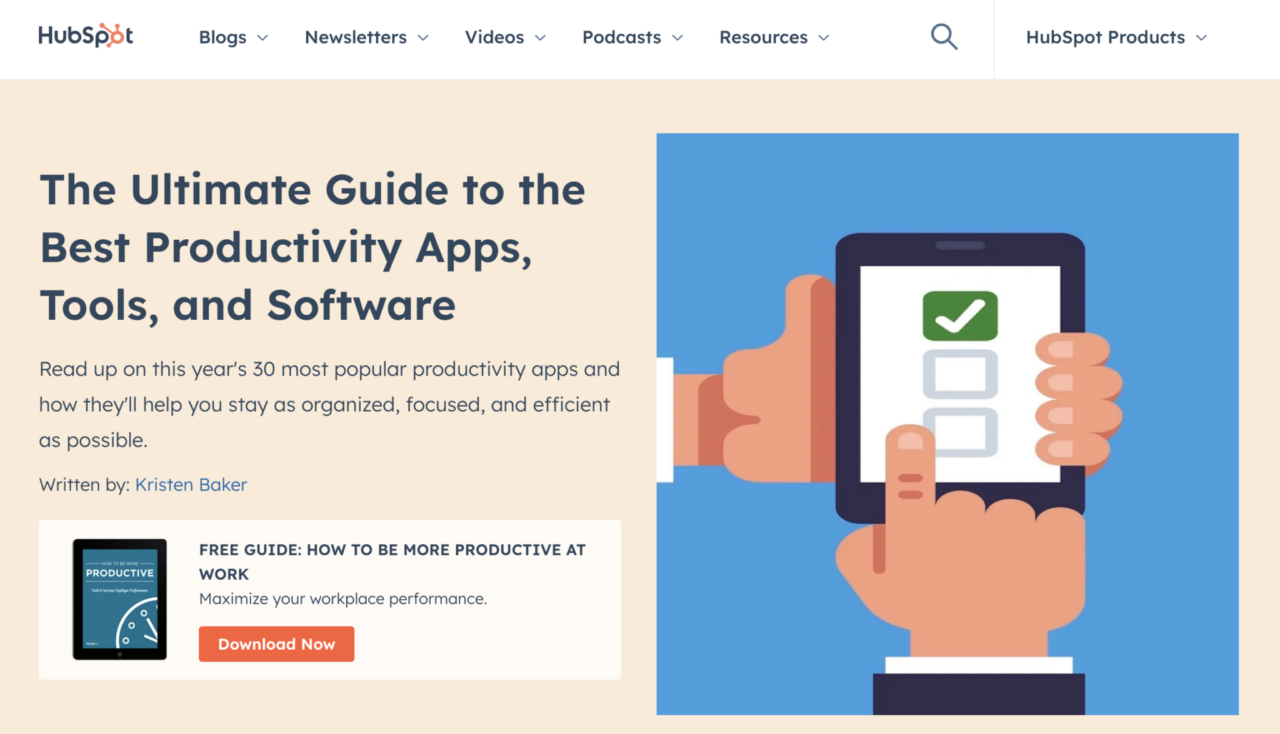
This is billed as a guide post, but it’s really a list post. A long list post. The 30 apps that HubSpot chose to include each get a couple of paragraphs explaining the features, uses and prices of each one. It’s broken into categories like chapters for easy navigation:
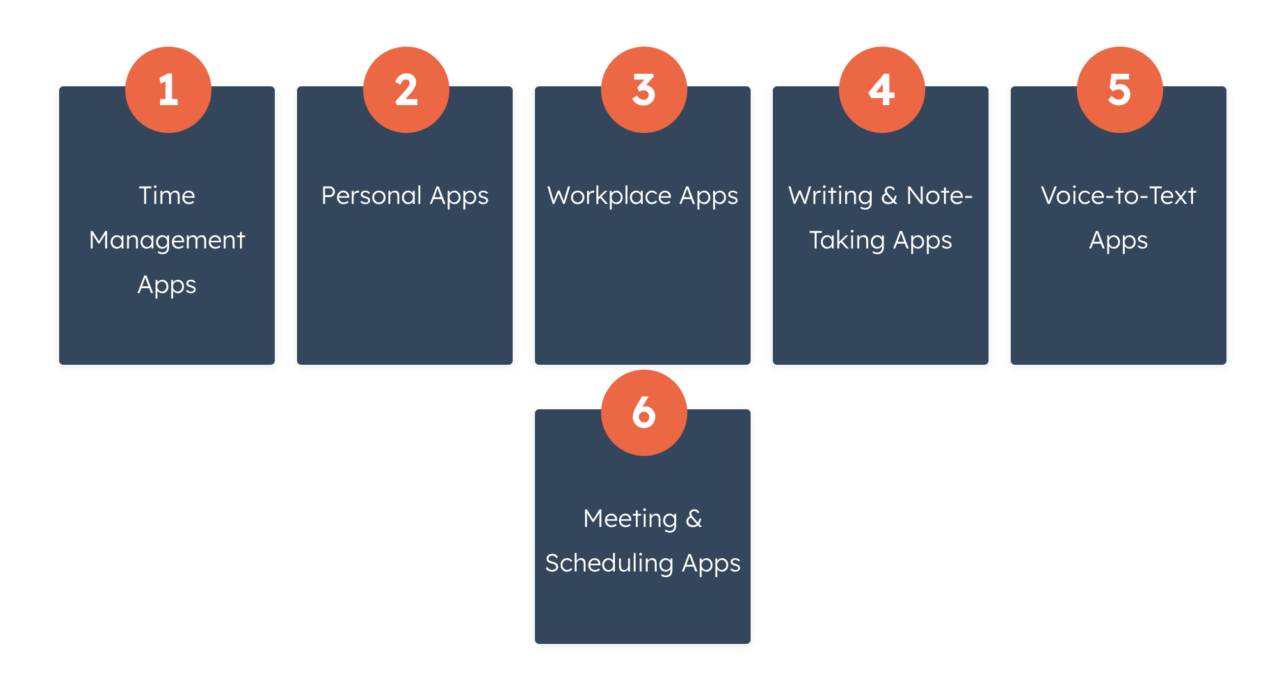
Within the post, they promote a gated guide to increasing workplace productivity, using the pillar content as a lead-in to the landing page. It’s smart – someone who reads a whole guide about productivity apps is likely looking for ways to boost their own output.
If those people deem this content to be useful and trustworthy, they’ll be ready to give up their contact info for more.
Backlinko: The SEO Services Report
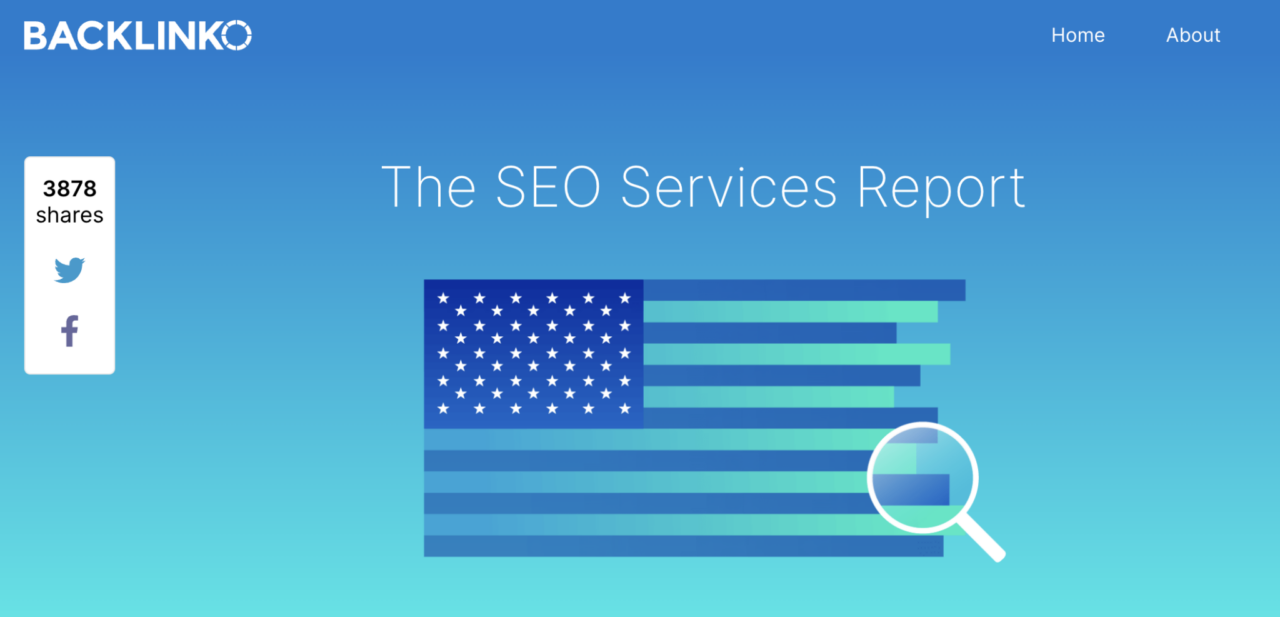
Original research is usually a slam-dunk when it comes to pillar content, and Brian Dean of Backlinko is a master at that. Bloggers and journalists within your industry are hungry for recent stats on the topics they write about, and if you can give it to them, you’ll get a link in return.
In addition to key takeaways, the information in this Backlinko post is presented in both text and eye-catching visuals:
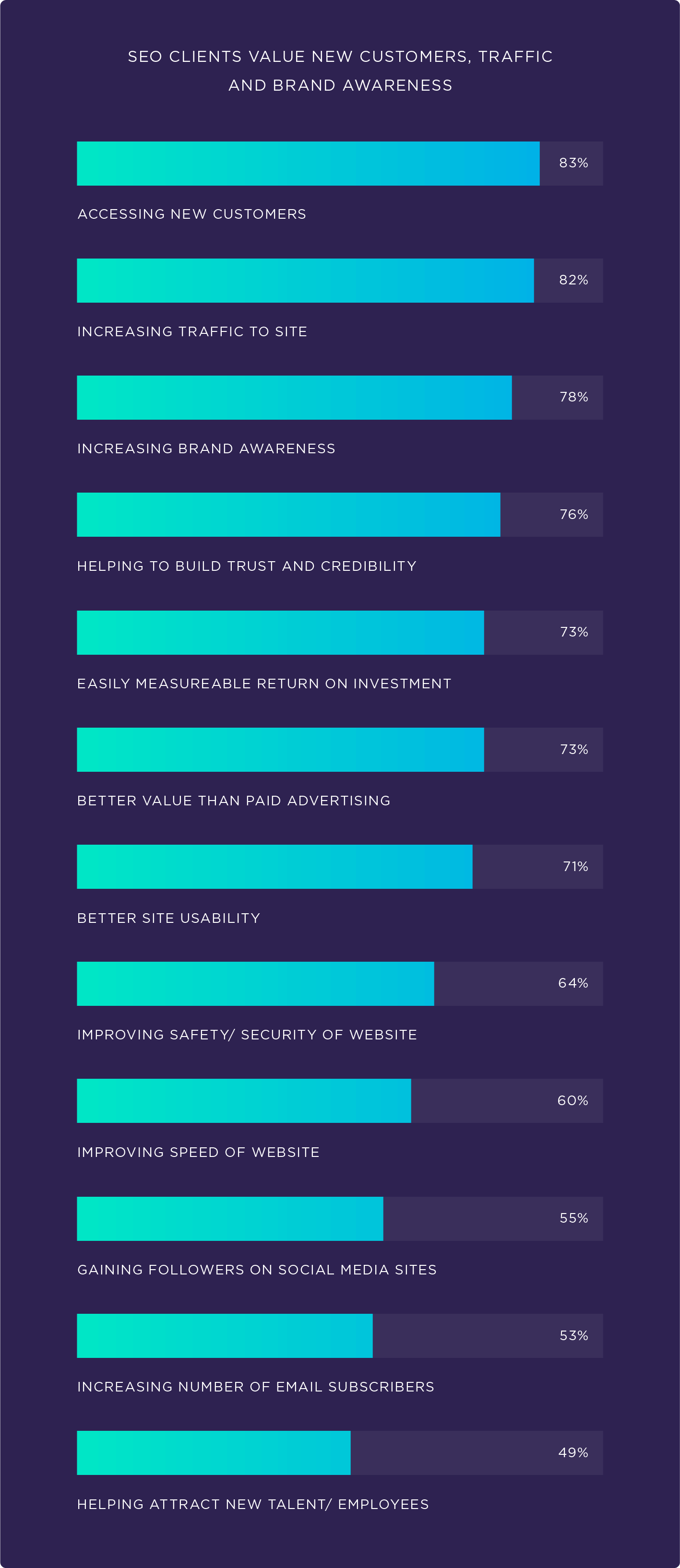
Single Grain: How to Create a Powerful Marketing Funnel (Step by Step)
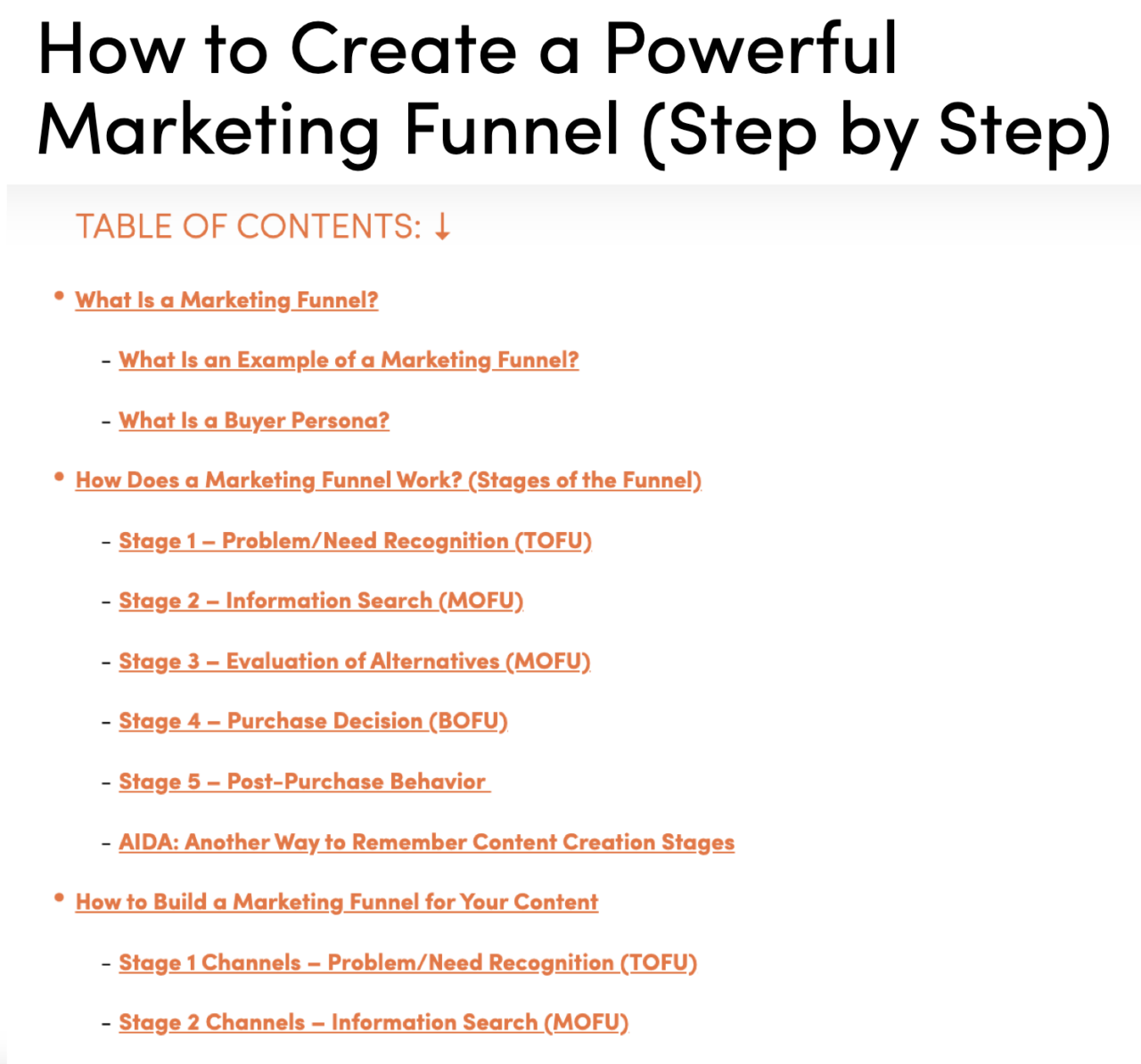
Rule #1: Always promote your own content within your other relevant content. 😉
This marketing funnel piece is a how-to/guide post, and it’s one of the most popular posts on our site. It gives the reader a step-by-step guide on how (and why) to create their own marketing funnel, and was written after seeing a lack of articles that went into this much detail (although there are more today): 5,400 words and tons of images, including several originals:

We published it a few years back, but keep it updated regularly (and let people know when we do an update).
Diet Doctor: Keto Guide for Beginners
Another real value and great content pillar example is the Keto Guide for Beginners by Diet Doctor. This pillar content example has everything you need to create an excellent pillar page.

What we like the most about this page is the inclusion of visual guides throughout the content. All the cluster pages are linked using visually attractive images.

In addition to the visual guides, they have videos, charts, case studies and compelling CTAs to make it a comprehensive, multimedia styled post:

To add more value for the reader, they also include a printable leaflet that you can stick on your fridge:
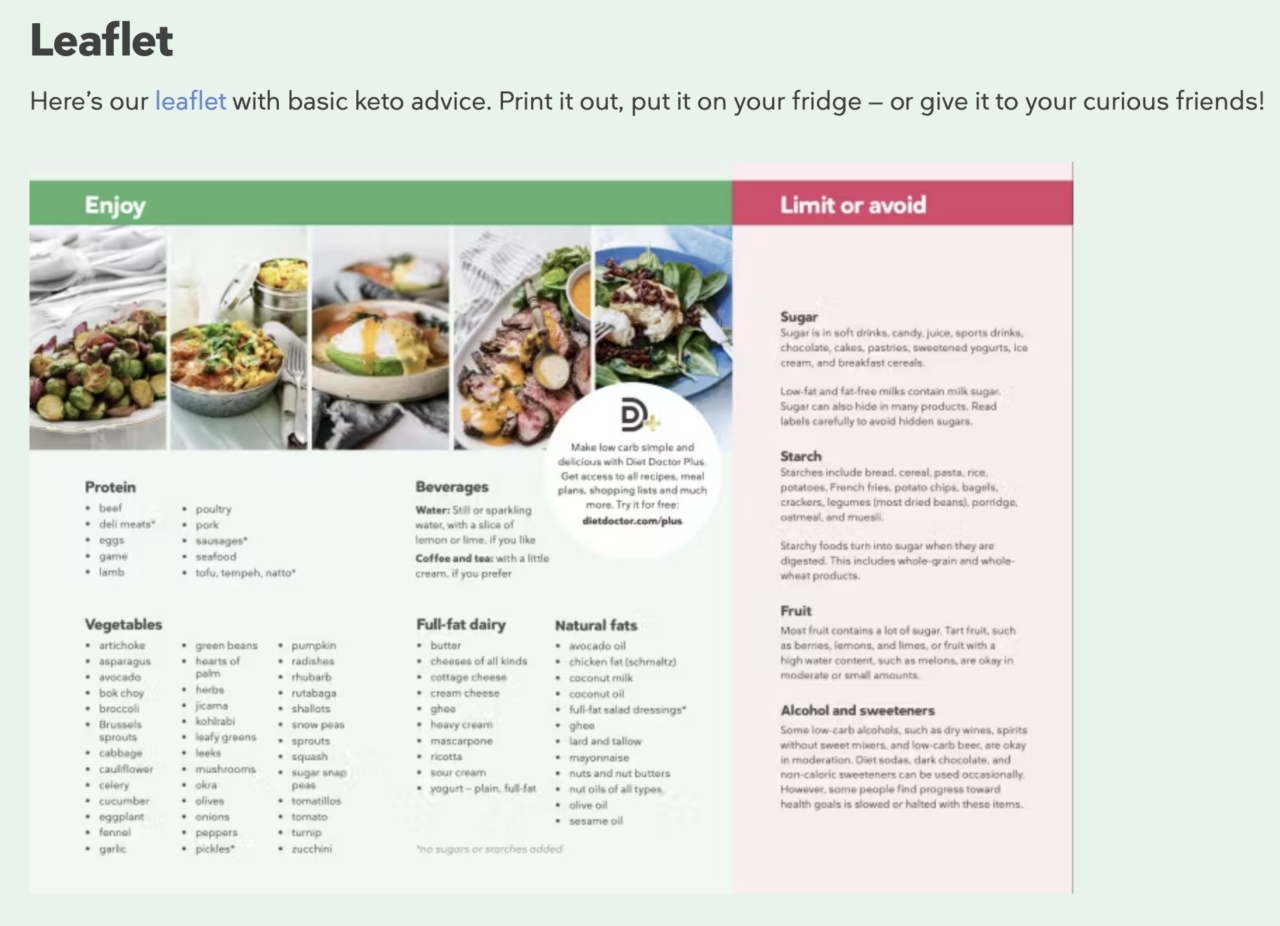
You can too create videos, infographics, images, and other supporting elements to produce similar styled content for your targeted keywords.
Pillar Content Pays Off
So overall, while it may take significantly longer to create your pillar content posts compared to the shorter blog posts you crank out on your business blog, you should find the extra search and referral traffic to be well worth the effort.
It’s worked for us, and if you do it right, it will work for you, too!
If you’re ready to grow your business with content, Single Grain’s content marketing experts can help!👇
Pillar Content FAQs
-
What is a pillar page?
A pillar page is a comprehensive piece of content designed to cover a broad aspect of a subject in-depth. It acts like a mini content hub.
SEO pillars typically have a significant amount of content, incorporating various content clusters, related keywords, and internal links to other relevant pages on the website.
-
How long should pillar content be?
Pillar pages work when they are longer and in-depth. You should keep your pillar content to about 5,000+ words. The focus should be on providing comprehensive information rather than strictly adhering to a specific word count.
-
How many content pillars should you have?
You should have between three to seven content pillars. This allows for focus, consistency, and variety in addressing your audience’s interests while maintaining a manageable approach to content creation.
-
What are the 5 pillars of content?
A strong content marketing strategy rests on the below five pillars of content:
- Pillar 1: Relevance – Your content should be relevant to your target audience and aligned with their interests, needs, and preferences. It should address the pain points of your audience, answer their questions, and provide value.
- Pillar 2: Quality – Your content should be well-researched, accurate, informative, and well-written. The quality of your content reflects your expertise and professionalism. Aim for originality, clarity, and engaging presentation to deliver the best possible user experience.
- Pillar 3: Consistency – Regularly publishing fresh, valuable content helps you stay top-of-mind with your audience and improves your content efforts. Create an editorial calendar or schedule to ensure a consistent flow of content that aligns with your audience’s expectations and your business goals.
- Pillar 4: Variety – Incorporate various content types such as blog posts, videos, podcasts, infographics, case studies, and interactive content. This variety enhances user experience, caters to different learning styles, and expands your content’s reach across different platforms and channels.
- Pillar 5: Promotion – Creating great content is not enough; you also need to promote it effectively. Promotion involves sharing your content through various channels such as social media, email marketing, guest posting, influencer collaborations, and SEO optimization. Take the help of influencers and social media marketers to actively promote your content to increase its visibility, reach a wider audience, and drive traffic back to your website or platform. By focusing on these pillars, you can create a strong foundation for your content marketing efforts.
-
What are social media content pillars?
Social media pillars are thematic categories or topics that you can use for the creation and organization of content on social media platforms.
Content pillars for social media serve as a framework for consistently generating relevant and engaging content to elevate your social media content strategy.
-
Should pillar content be gated or freely accessible?
Good question. It depends on your content marketing strategy and goals.
Some businesses prefer to offer this content freely accessible to maximize reach and visibility. Others choose to gate their pillar content behind a sign-up or subscription form to capture leads and build their email list.
I think this is the wrong approach. Your pillar page content should be the lead generator. If you have e-books or white papers on a similar topic, by all means promote them from your pillar page. But give away all the value from that page for free. It helps you establish authority and speak directly to people who are most likely to be interested in your product or service.
-
How often should pillar content be updated?
Pillar content should be periodically updated to ensure its accuracy and relevance. As new information emerges or industry trends change, you should review and revise your pillar content accordingly.
Aim to update it at least once or twice a year, but more frequent updates may be necessary for rapidly evolving topics.



